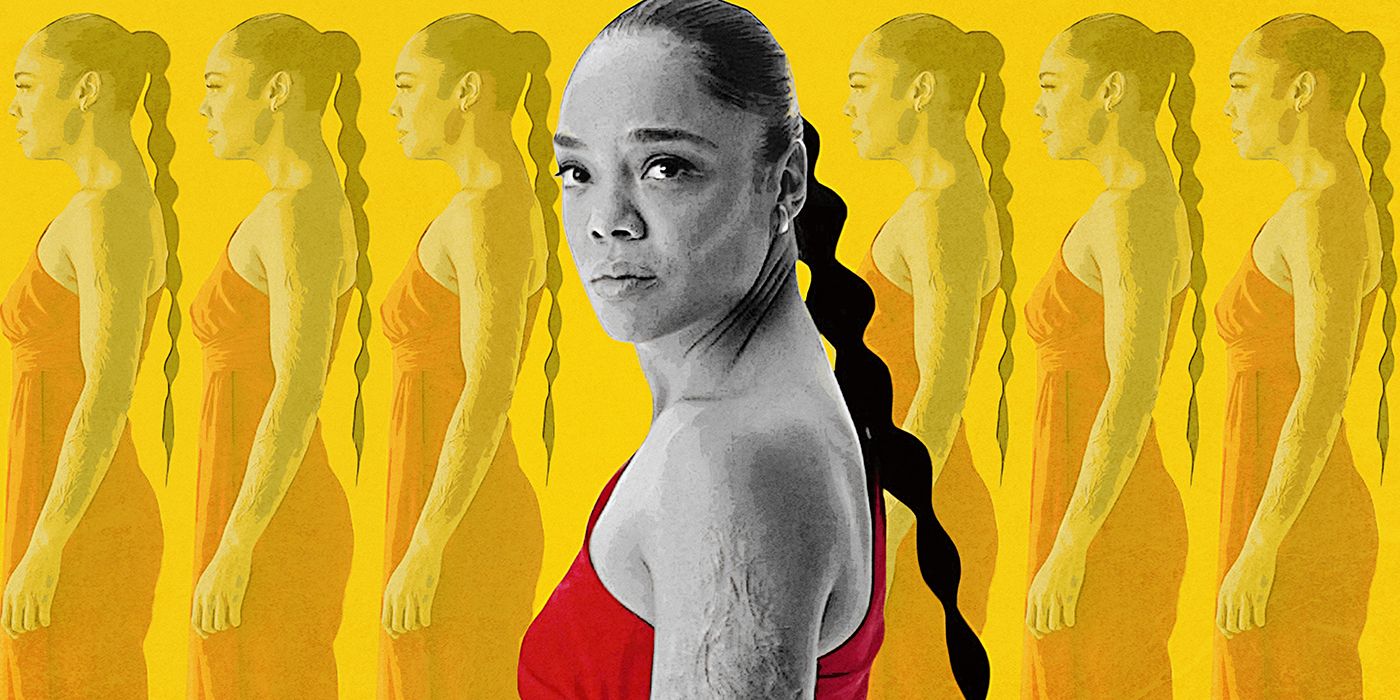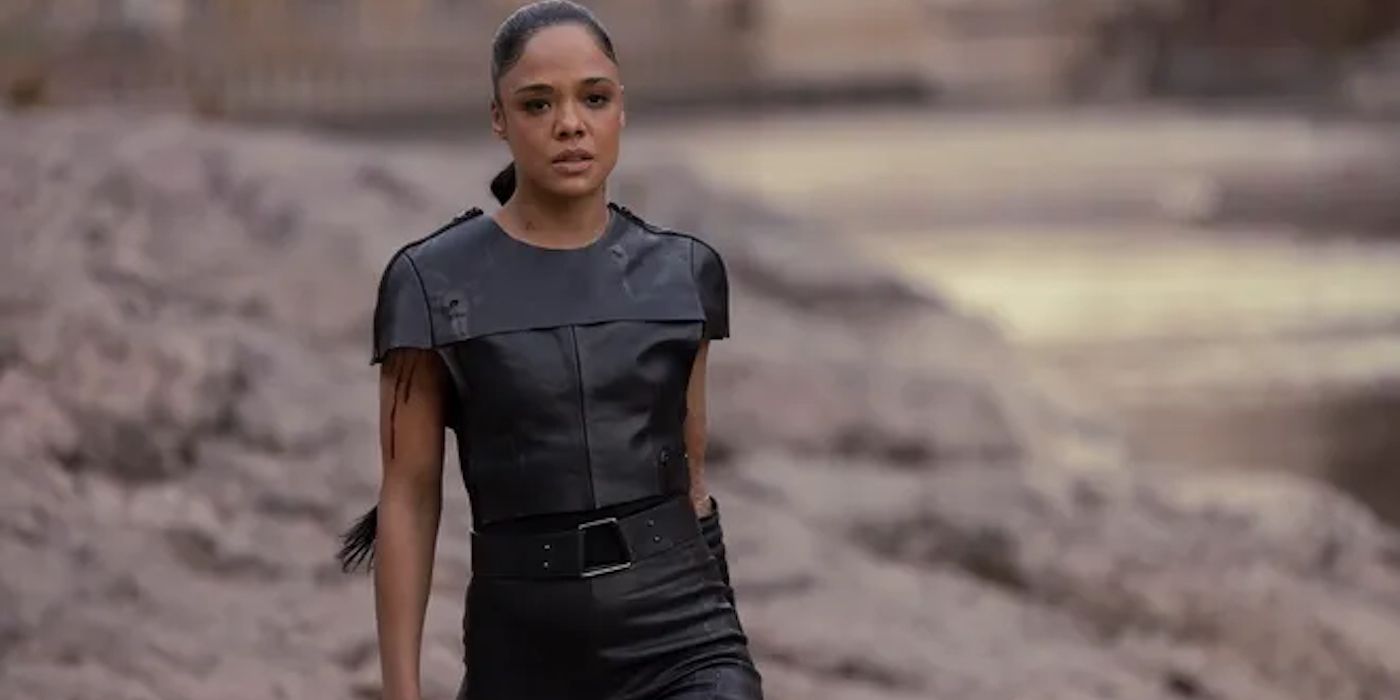Editor's Note: The following contains Westworld Season 4 spoilers.Charlotte Hale (played by Tessa Thompson) has always been something of an enigma in Westworld. By Season 4 she’s quite literally a different person than she was when we first met her. The real Charlotte Hale perished with the original Westworld and what we see now is only “Charlotte Hale” in name. In truth the host that was given her image is another extension of Dolores (Evan Rachel Wood), a host created by her to act as her pawn. And over the course of Season 3 we see this new Charlotte Hale struggle with what and who she is. And this is the Charlotte Hale we follow as our main villain for Season 4. Like the original Hale, this Charlotte is also cold and calculating. She puts a lot of effort into maintaining her image as an indomitable dictator of the new world order, both in her persona and actual looks. Charlotte Hale in every aspect of her being wants to come off as superior and unaffected by others which is why one single costume detail adds so much to our understanding of her character. Hale is perfect in presentation in every way except for a large, noticeable burn scar that covers most of her left arm. This scar is a visible contradiction to her facade of invulnerability and every time we see it we are reminded that Charlotte Hale is not as all-powerful as she wants to seem.
The scar may be something that, like a lot of Season 3, has been left in the further recesses of the viewer's mind. It occurred toward the end of the season as Charlotte still grappled with what her identity even is as a host masquerading as a human. Despite knowing herself to be a host and knowing Dolores’s campaign against the humans in general, she expresses a lot of concern over the real Hale's life, specifically her family. The real Charlotte Hale had a husband and son and as things escalate Hale expresses a want to protect them despite Dolores discouraging her. In Season 3, Episode 6 Hale makes the decision to try and help the real Hale’s family, fully immersing herself in the life she’s been given but as they try to make their escape their car is ambushed and goes up in flames. The resulting explosion kills her family and Hale pulls herself out a charred mess. From there on she’s fully given up on the humans and though she heals the majority of the burns on her body, she leaves the left arm as a reminder.
The scar is visible quite frequently when we see Hale in Season 4. She often wears pants suits and expensive business attire, but she often leaves her arms bare. Neither she nor any of the other characters remark on the scar for the majority of the season but the costuming keeps the viewer aware of its presence. And it forces us to wonder: why keep it? Her appearance is otherwise immaculate, barely a hair out of place, yet she keeps this massive eye-catching scar on her body for decades.
Hale’s choice to keep the scar represents her complicated relationship with humanity. It serves to remind her why she’s hellbent on creating her perfect world for hosts, having had her dreams of peaceful coexistence literally burned out of her. It reminds her of her own failures. The failure to stick to her original mission but also her failure to protect the people she set out to. Ostensibly, she keeps it as a reminder to herself of her hatred for humanity but in truth, it goes deeper than that. It’s truly a representation of how complicated her relationship with humanity is. Hale still can’t come to grips with how she feels about humanity. They keep contradicting her expectations and it infuriates her. The existence of outlier humans beyond her control, the deviant hosts who refuse to follow her orders, and the hosts that would rather kill themselves than be in the world she made contradict Hale’s absolute sense of power.
From the very beginning of Westworld, we’ve known how easy it is for hosts to repair physical injuries. There’s no practical reason for Hale to keep the scar, but she does because she can’t let go of the past. She wants a physical reminder of what she’s working for. Her outward appearance may be perfect hair, a perfect suit, and a perfect smirk but there’s a visible chink in her armor every time we see her. She carries proof that she is not invulnerable everywhere she goes. And as we see her walk around the whole season with this reminder we understand how despite her hatred for humans, she emulates them in many ways. Hale keeps the scar as a reminder of her hatred for humanity but in truth it only serves to show her how reductive her hosts versus humans mentality is.
In the final two episodes of Season 4, attention is finally brought to the scar — first, by Maeve (Thandiwe Newton) pointing it out, and later by Hale asking for it to be left as is when she’s getting repaired. These acknowledgments confirm verbally what the camera has been telling us all season: this scar is important to Hale. And she lays out why quite plainly, “Leave the scars,” she says to the hosts repairing her, “I want to remember.” It’s a sentiment that is, contradictorily, deeply human. As a host, Hale has no reason physically or mentally to keep this scar. It’s no trouble to dispose of and remembering is hardly an issue when your brain is a computer, yet she keeps it anyway. She wants this tangible reminder of her connection to humanity; a reminder of her family, of her failure, of how (despite appearances) she is not unbreakable. Though we don’t see Hale question, and eventually turn against, her beliefs until the very end of the season and yet from Episode 1, the hints are there. The scar is a physical reminder that Hale is not infallible and that her stoic persona is just that, a persona.
The scar only disappears after Charlotte Hale faces off with The Man In Black (Ed Harris) a final time. Having effectively fulfilled her mission by securing the future of The Sublime in Dolores’s hands, Hale strips herself down to her wireframe and watches the river flow in her final moments. She’s finally able to put her anger and hurt aside after destroying the monster she created. And at that moment beside the river, Hale is deeply human. She simply enjoys the beauty of nature, finally able to be at peace with herself and the world she was brought into. Her hatred of humans doesn’t end but her genuine want for the safety of her fellow hosts allows her to finally cast aside the scars and act with clarity. Her scars are a reminder of her mission–to eradicate humanity, help hosts, to never be hurt again–and with her mission fulfilled one way or another the scars can finally be left behind. The burn scars serve to show Charlotte Hale’s hidden depths. It’s a physical manifestation of her vulnerability and failures. And when we see those different dimensions and depths finally brought to the forefront after her perfect facade crumbles, both Hale and the audience can see Charlotte Hale’s true self: a complicated, contradictory host whose tyranny was powered by a fear of further loss.


